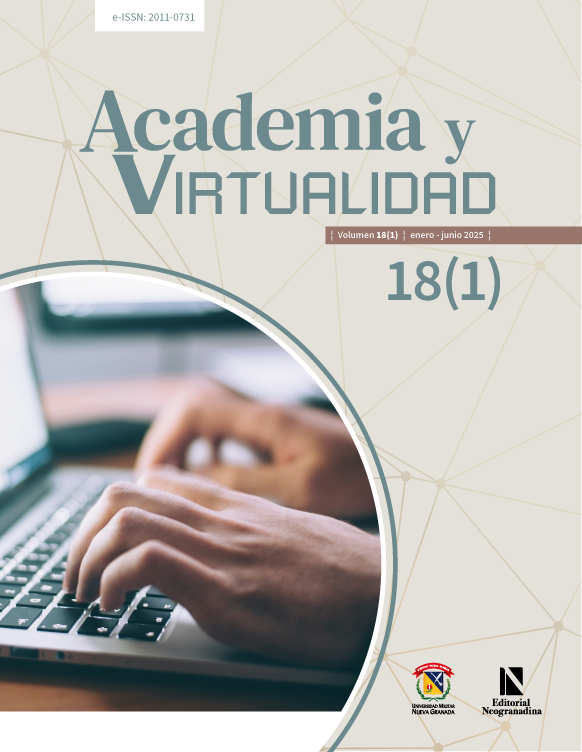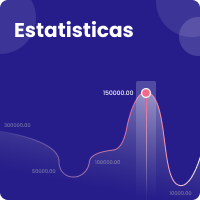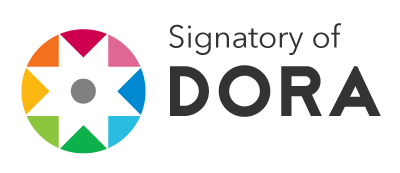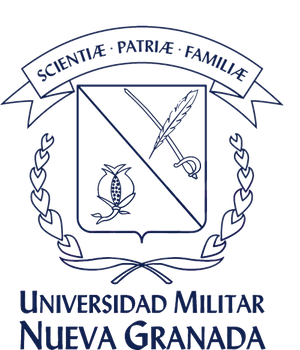Impacto de um curso virtual de inglês nos cursos de inglês institucionais para estudantes de graduação da Universidade Surcolombiana
Resumo
Este projeto de pesquisa investiga a implementação de um curso nas modalidades virtual e híbrida para o nível um dos Cursos Institucionais de Inglês (CII ) da Universidade Surcolombiana, durante o primeiro semestre de 2022. Por meio de questionários, entrevistas e um protótipo digital, o estudo avalia as percepções de estudantes e professores em relação à eficácia da experiência de ensino e aprendizagem do módulo virtual e híbrido, à comunicação entre professor e aluno e ao desenvolvimento de habilidades linguísticas. A experiência demonstra eficácia em motivar os estudantes, mas também evidencia limitações dos professores, falta de suporte em ambientes de ensino a distância e os estilos de aprendizagem observados entre os alunos. O estudo conclui que as preocupações com a igualdade e a frustração dos estudantes estão relacionadas à inflexibilidade dos professores na realização das tarefas, em vez de à dificuldade das próprias tarefas propostas no curso. Por fim, destaca-se a necessidade de assistência e formação contínuas para os professores, a fim de validar a flexibilidade do ensino a distância no ensino de inglês no contexto da educação superior.
Downloads
Referências
Adebileje, A. &and Akinola, A. (2020). Teaching and Learning English as a Second Language in Nigeria: Examining Evolving https://doi.org/10.17507/tpls.1009.02
Approaches and Methods. Theory and Practice in Language Studies, 10(9), 1015. DOI: https://doi.org/10.17507/tpls.1009.02
Baresh, E. F., Ali, S. M., &and Darmi, R. (2019). Using Hybrid Problem-based Learning (HPBL) Approach to Enhance Libyan EFL Students' Engagement with English Language. International Journal of Education and Literacy Studies, 7(2), 9. DOI: https://doi.org/10.7575/aiac.ijels.v.7n.2p.9
Bekteshi, E., &and Xhaferi, B. (2020). An Analysis of English for Specific Purposes among University Students. Educational Process: International Journal, 9(2), 90-102. DOI: https://doi.org/10.22521/edupij.2020.92.2
Casasola, C. (2021). Tecnologías para el Aprendizaje y el Conocimiento (TAC). Las verdaderas TIC aplicadas al contexto educativo. Campus Educación Revista Digital Docente, N°22, p. 33-37. Disponible en: https://www.campuseducacion.com/revista-digital-docente/%20numeros/22/
Clark, R. &and Mayer, R. (2008). E-learning and the science of instruction: Proven guidelines for consumers and designers of multimedia learning (2nd ed.). San Francisco, CA: Pfieiffer.
Escobar Fandiño, F. G., &and Silva Velandia, A. J. (2020). How an online tutor motivates E-learning English. Heliyon, 6(8), e04630. DOI: https://doi.org/10.1016/j.heliyon.2020.e04630
Escobar Fandiño, F. G., Muñoz, L. D., &and Silva Velandia, A. J. (2019). Motivation and E-Learning English as a foreign language: A qualitative study. Heliyon, 5(9), e02394. DOI: https://doi.org/10.1016/j.heliyon.2019.e02394
Fiorito, L. (2022, 30 octubre). Teaching English for Specific Purposes (ESP). UsingEnglish.com.
Gamage, A. &and Dehideniya, S. (2022). Online and Hybrid Teaching and Learning: Enhance Effective Student Engagement and Experience. Education Sciences, 12(10), 651. DOI: https://doi.org/10.3390/educsci12100651
Gonzáles, O. &and Fernández, F. (2019). Empowering Student Teachers and In-Service Teachers in the Creation of Open Educational Resources through the DSP-SCORM Package Strategy. ICT experiences in Surcolombiana University: classroom research systematization in initial and teacher training. (pp. 65-79). Editorial Universidad Surcolombiana.
Hall, T. (2020). Bridging Practice and Theory: The Emerging Potential of Design-based Research (DBR) for Digital Innovation in Education. Education Research &and Perspectives, 47(1).
Herrera, L. (2017). Impact of Implementing a Virtual Learning Environment (VLE) in the EFL Classroom. Íkala, Revista De Lenguaje Y Cultura, 22(3), 479-498. https://doi.org/10.17533/udea.ikala.v22n03a07
Jensen, L., Price, L. &and Roxå, T. (2019). Seeing through the eyes of a teacher: differences in perceptions of the teaching in face-to-face and digital contexts. Studies in Higher Education, 45(6), 1149-1159. DOI: https://doi.org/10.1080/03075079.2019.1688280
Kozdras, D., &and Welsh, J. (2018, March). Enter the matrix: a pedagogy for infusing technology. In Society for Information Technology &and Teacher Education International Conference (pp. 536-541). Association for the Advancement of Computing in Education (AACE).
Kumar, R. (2019). Research Methodology: A Step-by-Step Guide for Beginners (5th ed.). SAGE Publications Ltd. Masouleh, N. S., &and Jooneghani, R. B. (2012). Autonomous learning: A teacher-less learning! Procedia - Social and Behavioral Sciences, 55, 835-842. DOI: https://doi.org/10.1016/j.sbspro.2012.09.570
Muliyah, P., &and Aminatun, D. (2020). Teaching English for Specific Purposes in Vocational High School: Teachers, Beliefs and Practices. JET (Journal of English Teaching), 6(2), 122-133.DOI: https://doi.org/10.33541/jet.v6i2.1756
Muzaffarovna, Y. G. (2022, 12 septiembre). Challenges in Teaching English as a Second Language to Adults, Multilingual Settings and Teaching Methods | Eurasian Journal of Learning and Academic Teaching. https://geniusjournals.org/index.php/ejlat/article/view/2149
Nelson, B., &and Kim, Y. (2020). Multimedia design principles in game-based learning. In J. L. Plass, R. E. Mayer, &and B. D. Homer (Eds.), Handbook of game-based learning (pp. 307-327). The MIT Press.
Nesbit, J. C., Belfer, K., &and Leacock, T. (2003). Learning object review instrument (LORI). E-learning research and assessment network, 33-68.
Rao, S. C. V. (2018). ERIC - ED611486 - Blended Learning: A New Hybrid Teaching Methodology, Online Submission, 2019. https://eric.ed.gov/?id=ED611486
Ray, K. (2021, 29 marzo). What is Remote Learning? TechLearningMagazine. https://www.techlearning.com/how-to/what-is-remote-learning
Shariff, S. B. M., &and Shah, P. M. (2019). Pupils Perception of Using YouTube and Autonomous Learning. Creative Education. 10(13), 3509-3520. DOI: https://doi.org/10.4236/ce.2019.1013270
Soler, B., Villacañas, L. S., &and Pich, E. (2013). Creating and implementing a didactic sequence as an educational strategy for foreign language teaching. Ikala, revista de lenguaje y cultura, 18(3), 31-43. DOI: https://doi.org/10.17533/udea.
Van Lieshout, C., &and Cardoso, W. (2022). Google Translate as a tool for self-directed language learning. Language,Learning &and Technology, 26(1), 1-19. http://hdl.handle.net/10125/73460
ViewSonic. (2022, 10 noviembre). What Is Hybrid Learning? ViewSonic Library. https://www.viewsonic.com/library/education/what-is-hybrid-learning/
Widyaningtyas, F., &and Wahidah, F. S. (2022). Analyzing the Students' Motivation towards the Use of ICT in Learning English. Academic Journal Perspective: Education, Language, and Literature, 9(2), 147 DOI:. https://doi.org/10.33603/perspective.v9i2.6307
Yeni, M. (2019). Students' Self-Directed Learning in Listening Class. English Journal of Indragiri, 3(2), 107-115. DOI: https://doi.org/10.32520/eji.v3i2.602
Yulianti, R., Miftakh, F., &and Fitriyana, W. (2021). Undergraduate Students' Perspective on Self-Directed Learning in Speaking Skill. INTERACTION: Jurnal Pendidikan Bahasa, 8(2), 163-173. DOI: https://doi.org/10.36232/jurnalpendidikanbahasa.v8i2.1146
Copyright (c) 2025 Academia y Virtualidad

Este trabalho está licenciado sob uma licença Creative Commons Attribution-NonCommercial-NoDerivatives 4.0 International License.











